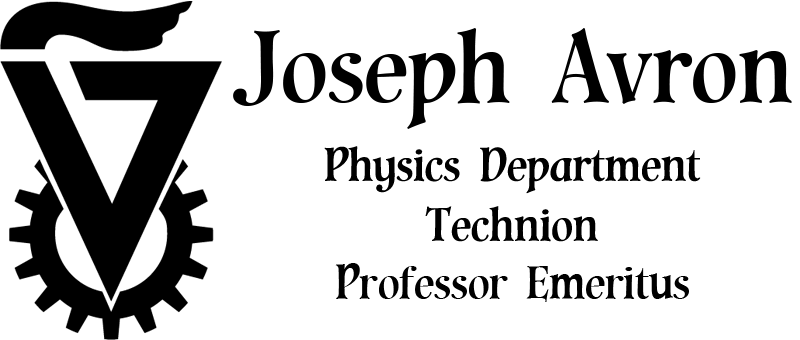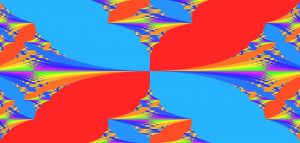It is a pleasure and honor to deliver the laudatio for Professor Joshua Zak, the 2014 Wigner medal Laureate.
As I will recount below, besides Joshua’s scientific achievements, there has been a thread through much of his life connecting him to the person implicitly also honored at this ceremony, Eugene Wigner. But before I get serious let me mention one tiny strand of that thread. For many years, when I was on the faculty of the Technion, Joshua’s office was down the hall from mine and we’d often chat in front of the blackboard. He would ask me some “simple” question, as if I were the real authority. So I’d give him the benefit of my thoughts, but then he’d have one “little” question, and pretty soon my glib answer was completely unraveled and I’d appreciate that there was a really deep issue involved. Now I ask those of you who knew Wigner: is this man his disciple or not?
Let me begin then with Joshua’s personal history.
Joshua Zak was born in 1929 in Wilno, Poland, now Vilnius, capital of Lithuania, where he went to a Hebrew grammar school. The Molotov-Ribbentrop pact of 1939 partitioned Poland between Germany and the USSR. Teaching Hebrew was forbidden once the Red army took over in Wilno, and the 10 year old Joshua switched to Yiddish. He was 12 when the German army invaded Vilnius and for the next two years Joshua lived in Vilnius Ghetto (1941-1943). At age 14 he was taken to a labor camp in Estonia and at 15 to the Stutthof concentration camp (1944-1945). At 16 he participated in the Death Marches from Stutthof to the West. While still 16 he was liberated by the Red Army, only to be drafted into that same army for the next for 3 years (until April 1948).
At age 19 Joshua returned to Vilnius and resumed his schooling. Two years later he graduated from high school with a silver medal. He then went on to study physics in the University of Vilnius,
In 1950 the Korean war started and Joshua was again drafted into the Red Army. He was on the train to go to war, when he heard his name on the loudspeaker. He was taken off the train and allowed to resume his studies. Whence this miracle? It was the successful intervention of his brother, Benzion, who later became a well known physician in Tel Aviv.
The interest of Joshua in group theory started early. As a an undergraduate he studied Wigner’s book on symmetries in German, since the English or Russian translations of the book were yet to be made. You can now count how many languages Joshua speaks.
In 1953 Joshua won the championship of Lithuania in 1000m singles in kayaking.
In 1955 Joshua got his Master’s degree from the University of Vilnius and applied to the Graduate School of Gertsen University in Leningrad. In the Soviet Union after graduating one had to perform 3 years of national service, and Joshua was assigned to a military school in the Latvian Republic. He was relieved from this obligation by being accepted as a graduate student in the group of Professor Lev Emanuilovich Gurevich. A second miracle.
The third miracle was the political upheavals in Poland and the rise of Gomulka in 1956. Among the reforms Gomulka introduced was allowing Jews born in Poland to emigrate to Israel. This was done partly to relieve anti-semitic pressures in Poland. Joshua and his two brothers seized the opportunity and in March 1957 moved to Warsaw, where Joshua worked in a book store for 9 months. He and his brothers arrived in Haifa, Israel in December 1957 and Joshua became a graduate student of Professor Nathan Rosen, the R of EPR, at the Technion.
Nathan Rosen was mostly interested in general relativity while Joshua was wanted to apply group theory to solid state physics. So Joshua was on his own and as a topic for his thesis he chose: Irreducible Representations of non-Symmorphic Space Groups. There was nobody in the Technion for Joshua to consult with, but he did have Giulio Raccah, at the Hebrew University in Jerusalem with whom he would consult on a weekly basis. Joshua finished his Ph.D. thesis in 1960 with George Koster of MIT as referee.
When Wigner visited Israel for the first time, he also visited the Physics Department at the Technion. It was a small department and Rosen introduced all its members to Wigner. When Joshua’s turn came Wigner asked him what was the subject of his thesis. Joshua told him. Wigner’s reaction was, “Oh really, I had a student, Frederick Seitz, who also did some work on representations of Space Groups.” It was well known that after Seitz there was very little left to do in this field.
In 1961 Benjamin Lax, Director of the National Magnet Laboratory (NML) at MIT, invited Joshua for the academic year 1963-64. It was at there that Joshua discovered the Magnetic Translation Group. He then returned to the Technion as a faculty member, where he has remained ever since. In 1967 Joshua was invited again to MIT as visiting professor. During that year he discovered the kq-representation, a.k.a., the Zak Transform. The Zak phase was invented at the Technion in 1989.
Let me now turn to the scientific side, with a short description of Zak’s main discoveries.
First the kq-representation. Weyl recognized that the canonical commutation relations between position and momentum cannot be implemented by finite dimensional matrices: P and Q are necessarily unbounded operators. As we all know, Q can be implemented as multiplication by the coordinate on the line and P as a first order differential operator. By a theorem of Stone and von Neumann all other representations of the canonical commutation relations are unitarily related to this one. For example, the momentum representation, where P is a multiplication and Q a first order differential operator is unitarily equivalent by the Fourier transform. The kq representation is a representation of the canonical commutation relations which maintains the P Q symmetry. Actually, kq is a one parameter family of representations parameterized by a period: The q of the kq is associate with the position Q modulo the period and the k is associated with P modulo the dual period in momentum space. The two periods define a lattice in phase space whose area is one Planck unit. In the kq representation both P and Q are first order differential operators acting on functions on a compact two dimensional cell in phase space. The boundary conditions need to be twisted so that P and Q are self-adjoint and have the correct spectrum.
The kq representations are universal, and like the position representation, can be used to study any quantum problem. However, it is naturally tailored to situations with discrete translational symmetry where the Schroedinger equation retains its form as a differential operator, rather than a pseudo-differntial operator. The kq-representation has the Bloch theorem built in and gives elegant proofs of fundamental results in the dynamics of Bloch electrons. It also has applications to condensed matter physics and to signal processing. Google gives more than 640,000 entries under the entry “Zak transform.” It is recognized by Mathematica, Wolfram alpha, and Matlab. Its implementation was granted US patent in 2012 [YOSSI, IS THIS THE PATENT I’VE ATTACHED] and books have been written about it.
The magnetic translation group: Emmy Noether taught us that each continuous symmetry in the Lagrangian implies a conservation law. Bloch then found that in quantum mechanics the discrete symmetry of translations also leads to a conserved momentum. An interesting situation arises when translations in different directions fail to commute. This happens for translations in phase space, but, surprisingly, it can also happen for translations in coordinate space in the presence of a constant magnetic field. Since the vector potential associated with a homogenous magnetic field is a linear function, it is translation invariant up to a gauge transformation. The magnetic translations introduced by Zak are translations accompanied by a gauge transformation. They do not commute in general but rather satisfy the same Weyl algebra as translation in phase space. This observation is fundamental to the modern theory of the quantum Hall effect and is at the roots of Chern-Simons theory. Another important application is to periodic Schroedinger operators with a magnetic field and in particular the Hofstadter model where the symmetry and spectral properties are sensitive to the rationality of flux per unit cell. When Joshua studied this problem in the 1960’s it looked like a mathematical delicacy, with little relation to observable physical phenomena. Fifty years later, experimental work on the quantum Hall effect demonstrate this sensitivity to the flux. This work now has the fetching name, “Moire butterflies” (see Dean et al, Nature 2013).
The Zak phase: In 2005 Kane and Mele discovered that there are distinct topological classes of insulators labeled by integers. These phases are characterized by non-dissipative chiral edge currents. The subject of topological insulators is arguably one of the hottest topics in condensed matter physics today. The Zak phase, which Joshua found in 1989, is the one-dimensional granddaddy of topological insulators: It associates a parity index with insulators in one dimension. (There are no edge currents in one dimension, unfortunately). The Zak phase is a close relative of the Mead-Truhlar phase in the adiabatic pseudo-rotations of molecules. The Zak phase has been measured in recent experiments by Immanuel Bloch (Max Planck Inst.) and E. Demler (Harvard) on cold atoms.
This brings my laudatio to its end. Eugene Wigner was the scientific hero of Joshua Zak. If Wigner could be watching this ceremony, I am sure he would be pleased to see his disciple, Joshua Zak, honored with the medal that bears his name.
Larry Schulman, who delivered the Laudatio on the 16 July 2014 in Gehnt, and me

